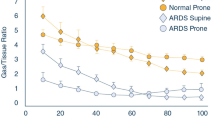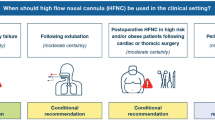Abstract
There are a number of potential physical advantages to performing orotracheal intubation in an upright position. The objective of this study was to measure the success of intubation of a simulated patient in an upright versus supine position by novice intubators after brief training. This was a cross-over design study in which learners (medical students, physician assistant students, and paramedic students) intubated mannequins in both a supine (head of the bed at 0°) and upright (head of bed elevated at 45°) position. The primary outcome of interest was successful intubation of the trachea. Secondary outcomes included log time to intubation, Cormack–Lehane view obtained, Percent of Glottic Opening score, provider assessment of difficulty, and overall provider satisfaction with the position. There were a total of 126 participants: 34 medical students, 84 physician assistant students, and 8 paramedic students. Successful tracheal intubation was achieved in 114 supine attempts (90.5 %) and 123 upright attempts (97.6 %; P = 0.283). Upright positioning was associated with significantly faster log time to intubation, higher likelihood of achieving Grade I Cormack–Lehane view, higher Percent of Glottic Opening score, lower perceived difficulty, and higher provider satisfaction. A subset of 74 participants had no previous intubation training or experience. For these providers, there was a non-significant trend toward improved intubation success with upright positioning vs supine positioning (98.6 % vs. 87.8 %, P = 0.283). For all secondary outcomes in this group, upright positioning significantly outperformed supine positioning.

Similar content being viewed by others
References
Sawyer BT, Ginde AA (2014) Scope of practice and autonomy of physician assistants in rural versus urban emergency departments. Acad Emerg Med 21:520–525
Levitan RM, Mechem CC, Ochroch EA, Shofer FS, Hollander JE (2003) Head-elevated laryngoscopy position: improving laryngeal exposure during laryngoscopy by increasing head elevation. Ann Emerg Med 41(3):322–330
Collins JS, Lemmens HJ, Brodsky JB, Brock-Utne JG, Levitan RM (2004) Laryngoscopy and morbid obesity: a comparison of the “sniff” and “ramped” positions. Obes Surg 14(9):1171–1175
Cattano D, Melnikov V, Khalil Y, Sridhar S, Hagberg CA (2010) An evaluation of the rapid airway management positioner in obese patients undergoing gastric bypass or laparoscopic gastric banding surgery. Obes Surg 20(10):1436–1441
Lebowitz PW, Shay H, Straker T, Rubin D, Bodner S (2012) Shoulder and head elevation improves laryngoscopic view for tracheal intubation in nonobese as well as obese individuals. J Clin Anesth 24(2):104–108
Fontanarosa PB, Goldman GE, Polsky SS, Schuckman HA, Poyle M (1988) Sitting oral-tracheal intubation. Ann Emerg Med 17(4):336–338
Lee BJ, Kang JM, Kim DO (2007) Laryngeal exposure during laryngoscopy is better in the 25 degrees back-up position than in the supine position. Br J Anaesth 99(4):581–586
Rao SL, Kunselman AR, Schuler HG, DesHarnais S (2008) Laryngoscopy and tracheal intubation in the head-elevated position in obese patients: a randomized, controlled, equivalence trial. Anesth Analg 107(6):1912–1918
Kennedy CC, Cannon EK, Warner DO, Cook DA (2014) Advanced airway management simulation training in medical education: a systematic review and meta-analysis. Crit Care Med 42(1):169–178
Drenguis AS, Carlson JN (2015) GlideScope vs. C-MAC for Awake Upright Laryngoscopy. J Emerg Med 49(3):361–368
Pinchalk M, Roth RN, Paris PM, Hostler D (2003) Comparison of times to intubate a simulated trauma patient in two positions. Prehosp Emerg Care 7(2):252–257
Venezia D, Wackett A, Remedios A, Tarsia V (2012) Comparison of sitting face-to-face intubation (two-person technique) with standard oral-tracheal intubation in novices: a mannequin study. J Emerg Med 43(6):1188–1195
Brock-Utne JG, Jaffe RA (1991) Tracheal intubation with the patient in a sitting position. Br J Anaesth 67(2):225–226
Khandelwal N, Khorsand S, Mitchell SH, Joffe AM (2016) Head-elevated patient positioning decreases complications of emergent tracheal intubation in the ward and intensive care unit. Anesth Analg 122(4):1101–1107
Krage R, van Rijn C, van Groeningen D, Loer SA, Schwarte LA, Schober P (2010) Cormack-Lehane classification revisited. Br J Anaesth 105(2):220–227
O’Shea JK, Pinchalk ME, Wang HE (2005) Reliability of paramedic ratings of laryngoscopic views during endotracheal intubation. Prehosp Emerg Care 9(2):167–171
Ochroch EA, Hollander JE, Kush S, Shofer FS, Levitan RM (1999) Assessment of laryngeal view: percentage of glottic opening score vs Cormack and Lehane grading. Can J Anaesth 46(10):987–990
Author information
Authors and Affiliations
Corresponding author
Ethics declarations
Conflict of interest
The authors declare that they have no conflict of interest. The authors have no financial disclosures. There is no financial support for this work to report.
Statement of human and animal rights
The study was deemed exempt by the Indiana University Institutional Review Board. All procedures performed in studies involving human participants were in accordance with the ethical standards of the institutional and/or national research committee and with the 1964 Helsinki declaration and its later amendments or comparable ethical standards.
Informed consent
Informed consent was obtained from all individual participants included in the study.
Rights and permissions
About this article
Cite this article
Turner, J.S., Ellender, T.J., Okonkwo, E.R. et al. Cross-over study of novice intubators performing endotracheal intubation in an upright versus supine position. Intern Emerg Med 12, 513–518 (2017). https://doi.org/10.1007/s11739-016-1481-z
Received:
Accepted:
Published:
Issue Date:
DOI: https://doi.org/10.1007/s11739-016-1481-z




